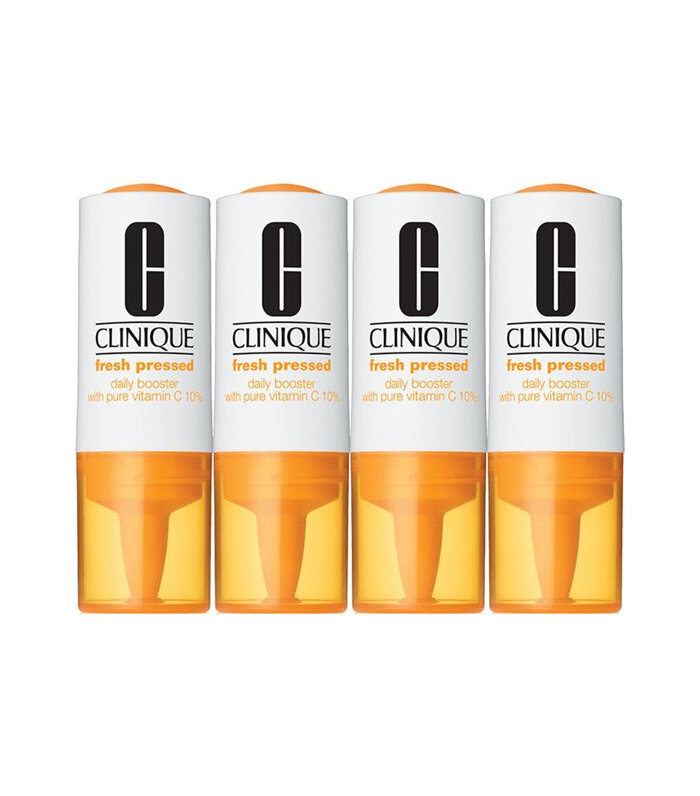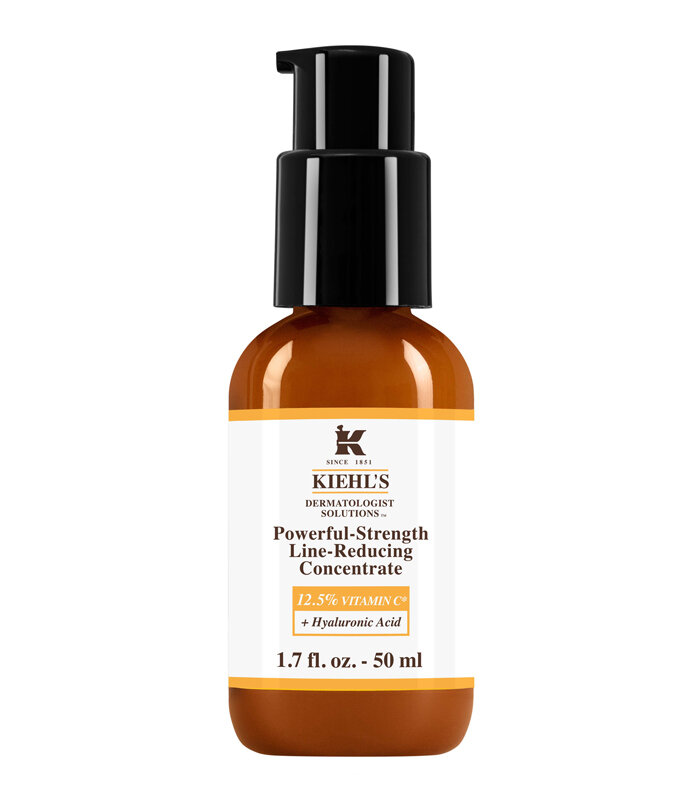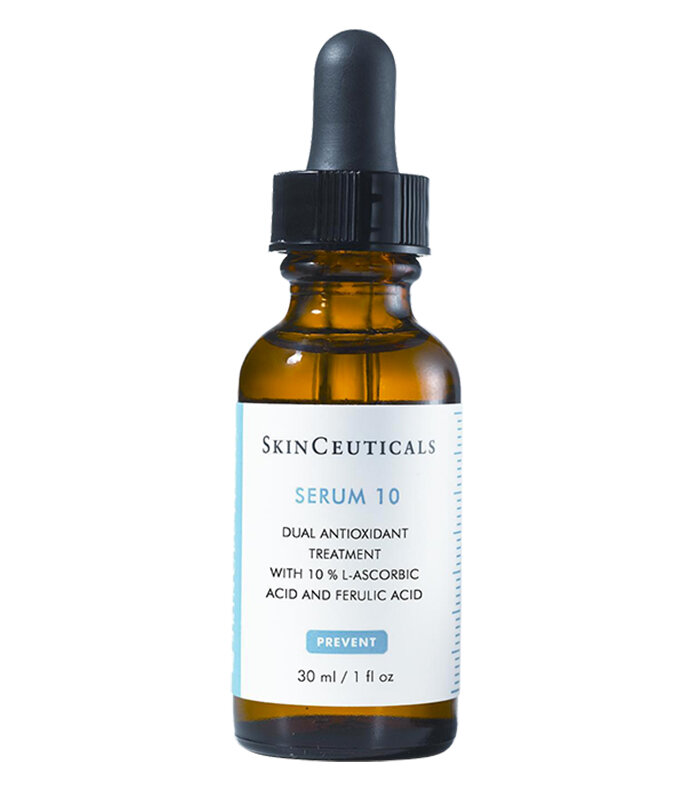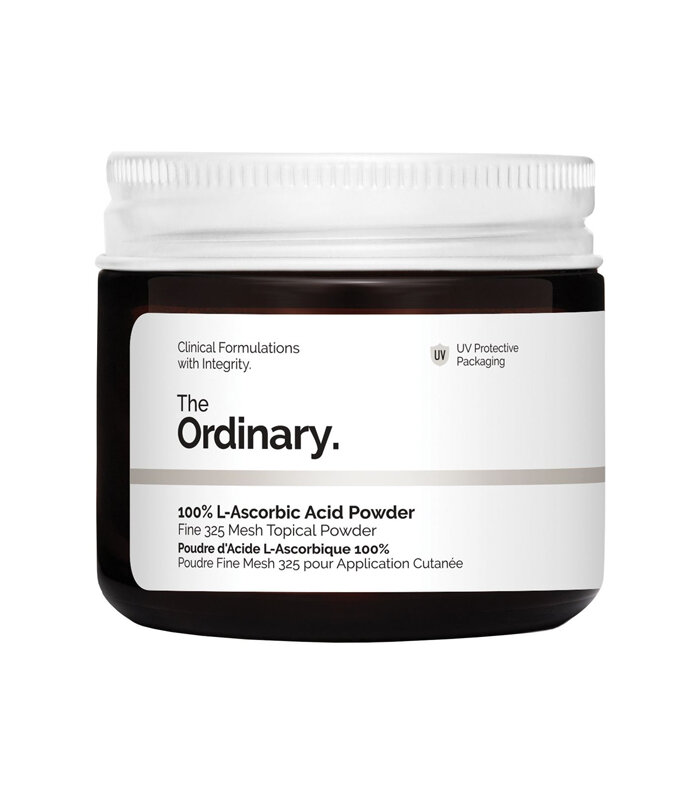Vitamin C has so many benefits that it should be part of everyone’s skincare routine, just like cleansing or moisturising. But skincare is scientific and so, while it can tackle hyperpigmentation, reduce redness, protect from environmental aggressors, boost collagen production, help heal breakouts and generally leaves your complexion looking glowy and bright, there are some Vitamin C rules to live by (more on those below).
First up, it’s worth knowing that not all Vitamin Cs are born equal. The most potent is straight up Vitamin C, known as ascorbic or l-ascorbic acid, but there are plenty of Vitamin C derivatives, too. L-ascorbic acid has a very low pH of around 3.5, whereas our skin’s pH is naturally around 5.5, so L-ascorbic acid can be quite irritating to skin that’s prone to sensitivity. But that doesn’t mean you can’t get in on the action, this is where the Vitamin C derivatives such as ethyl ascorbic acid come in. They pass down into the skin and convert to l-ascorbic acid once inside; this conversion means they are less potent and take a little longer to work, but they’re also less irritating.
How do you know which type of Vitamin C is in your product? Looking at a Vitamin C product’s ingredient list it will either say l-ascorbic acid or it will have another name that includes ‘asc’, such as sodium ascorbyl phosphate, magnesium ascorbyl phosphate and ascorbyl glucoside. Another way to tell which Vitamin C is in your skincare product is by the consistency—l-ascorbic acid will often (but not always) come in an anhydrous (water-free) formula or an airtight opaque container, these measures each ensure that the molecule is kept stable and potent. Derivatives, however, will tend to come in either an oil- or water-based formula. This isn’t a hard and fast rule, so it’s always best to check out the ingredient list.
The Vitamin C Benefits
Vitamin C is brightening: Whether your complexion looks a little dull or you’re dealing with hyperpigmentation, Vitamin C should be in your routine. For starters, it helps to smooth the skin’s surface which means it will reflect light and look brighter. Vitamin C has also been found to prevent the overproduction of melanin, the pigment found in the skin. Don’t worry it won’t stop you getting a healthy tan, but it will slow down production of melanin in the places where it has gone into overdrive.
Vitamin C is hydrating: The Vitamin C derivative magnesium ascorbyl phosphate (MAP) was shown in a study to hydrate the skin and prevent trans epidermal water loss (TEWL).
Vitamin C reduces redness: A potent anti-inflammatory, if you’re dealing with unwanted redness definitely give Vitamin C a try.
Vitamin C speeds up skin healing: Whether you’ve got breakouts or sunburn, Vitamin C can help to heal the skin.
Vitamin C boosts collagen production: Fine lines and wrinkles occur for a few reasons but partly due to the reduced production of collagen (a building block of plump, healthy skin). Vitamin C is a good ingredient to factor into your routine because it actually increases collagen production.
The 3 Vitamin C Rules to know
Vitamin C Rule #1: Use it in the Morning
Vitamin C, alongside B and E, is a potent antioxidant meaning it will protect your skin from all manner of ageing aggressors like pollution and UV rays, protecting your cells from oxidative damage that can occur. You can apply Vitamin C after cleansing, wait a few moments and then apply your serums or moisturiser as normal. Always apply SPF, while Vitamin C limits the damage caused by UV rays it’s not a sunscreen.
Vitamin C Rule #2: Boost the Benefits with Niacinamide
A lot of online articles say you shouldn’t use Vitamin C and niacinamide together but since Vitamin C naturally occurs in our skin, if they didn’t play nice there would be no point using niacinamide in skincare full stop. Niacinamide (also known as Vitamin B3) helps to strengthen the skin barrier, reduce the look of enlarged pores and fine lines. It also helps to brighten your complexion, just like Vitamin C, so they’re definitely on the same team. You can either layer them in separate serums or find an expertly blended formula that contains both.
Note: Niacinamide can cause temporary (and harmless!) flushing in some people, so if you notice it after applying niacinamide with l-ascorbic acid try one of the Vitamin C derivatives or stop.
Vitamin C Rule #3: Take Caution When Combining with Retinol
It’s often said that Vitamin C and retinol shouldn’t be used together, which is kinda true. Retinol has a pH of around 5, Vitamin C is around 3.5 and healthy skin has a pH of 5.5, so if you want to use retinol and Vitamin C (the potent l-ascorbic acid form) then you need to apply them at different times:
AM: Vitamin C, PM: Retinol.
AM: Vitamin C, PM: Retinol and Vitamin C on alternate nights.
AM: Vitamin C, PM: Vitamin C, wait at least 30 minutes, retinol.
Or, if you want to apply Vitamin C and retinol together then you should look to use a Vitamin C derivative as these are close in pH to both your skin and the retinol, so they combine more effectively and are much less likely to cause irritation. For example, here are the pH levels of the Vitamin C derivatives I mentioned at the top of this article:
Ethyl ascorbic acid—pH 5-6.5 (find it in The Ordinary Ethylated Ascorbic Acid 15% Solution, £18)
Sodium ascorbyl phosphate—pH 6-7 (find it in Ole Henriksen Truth Serum, £42)
Magnesium ascorbyl phosphate—pH 6-7 (find it in The Ordinary Magnesium Ascorbyl Phosphate Solution 10%, £8)
Ascorbyl glucoside—pH 5-8 (find it in The Ordinary Ascorbyl Glucoside Solution 12%, £8.90)
Shop my favourite potent l-ascorbic acid Vitamin C products below…




As you can see, there are so many good reasons to factor Vitamin C into your routine, as well as reputable brands offering potent options. Give it a try and let me know how you get on! You can follow me on Instagram @amy_lawrenson or drop a comment in the box below.
